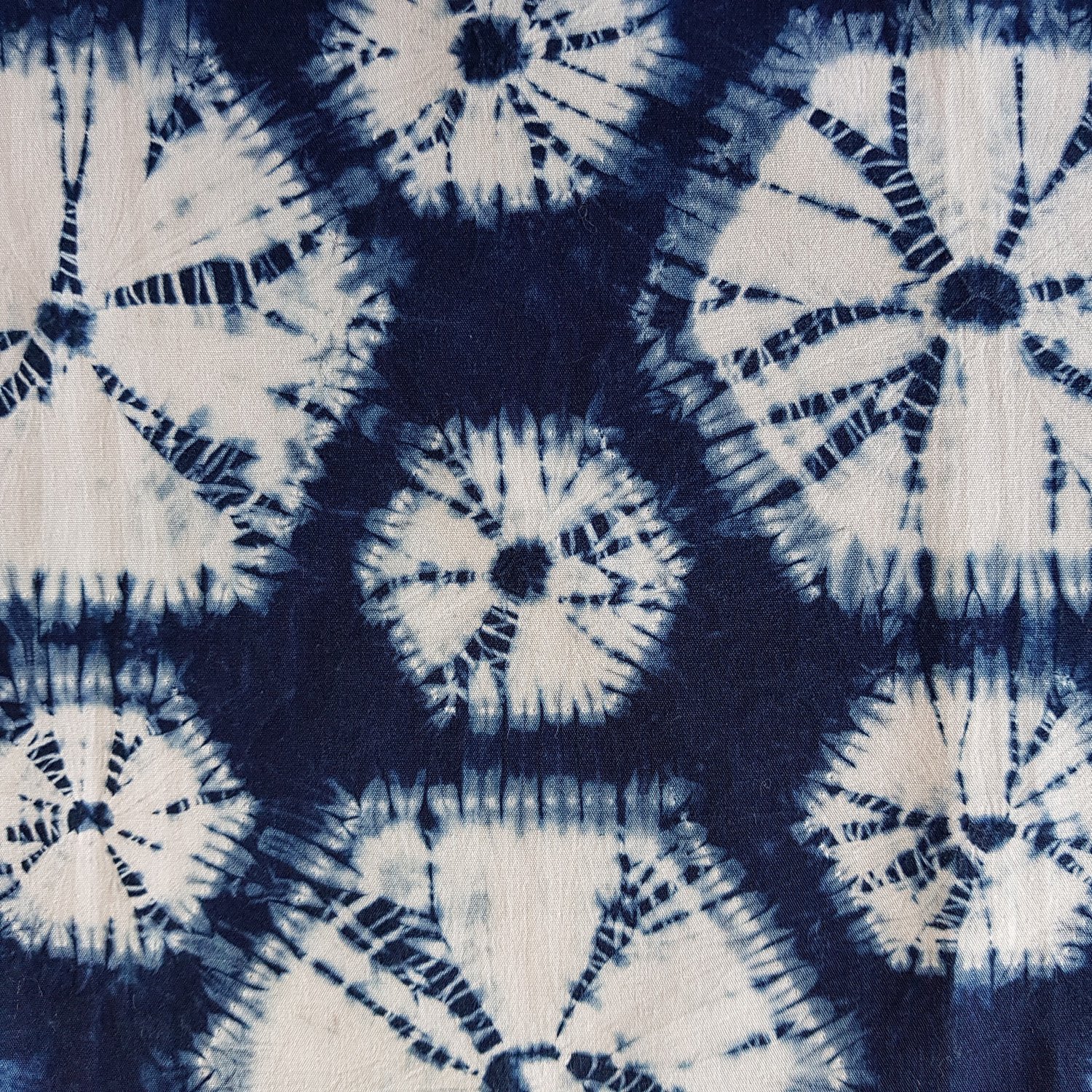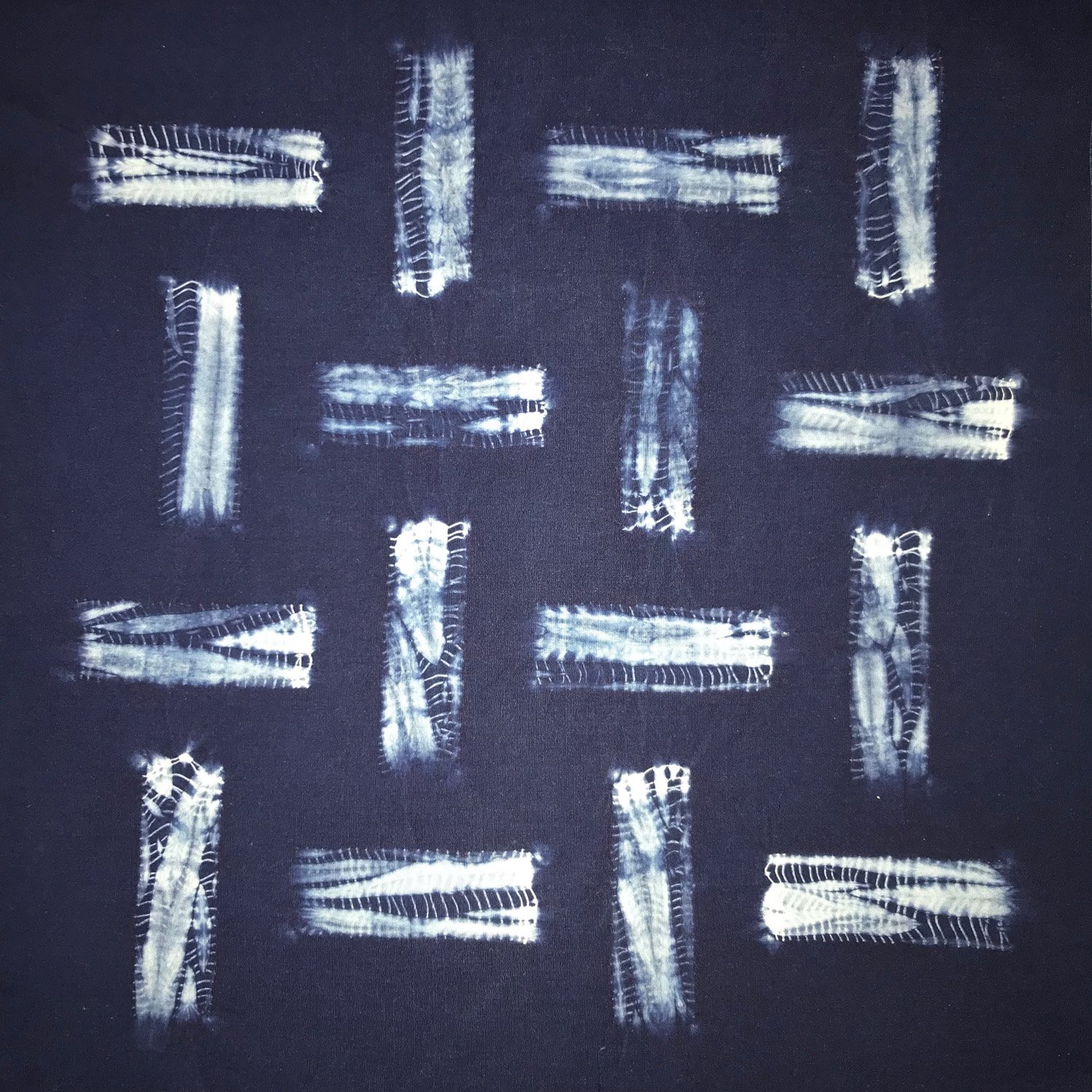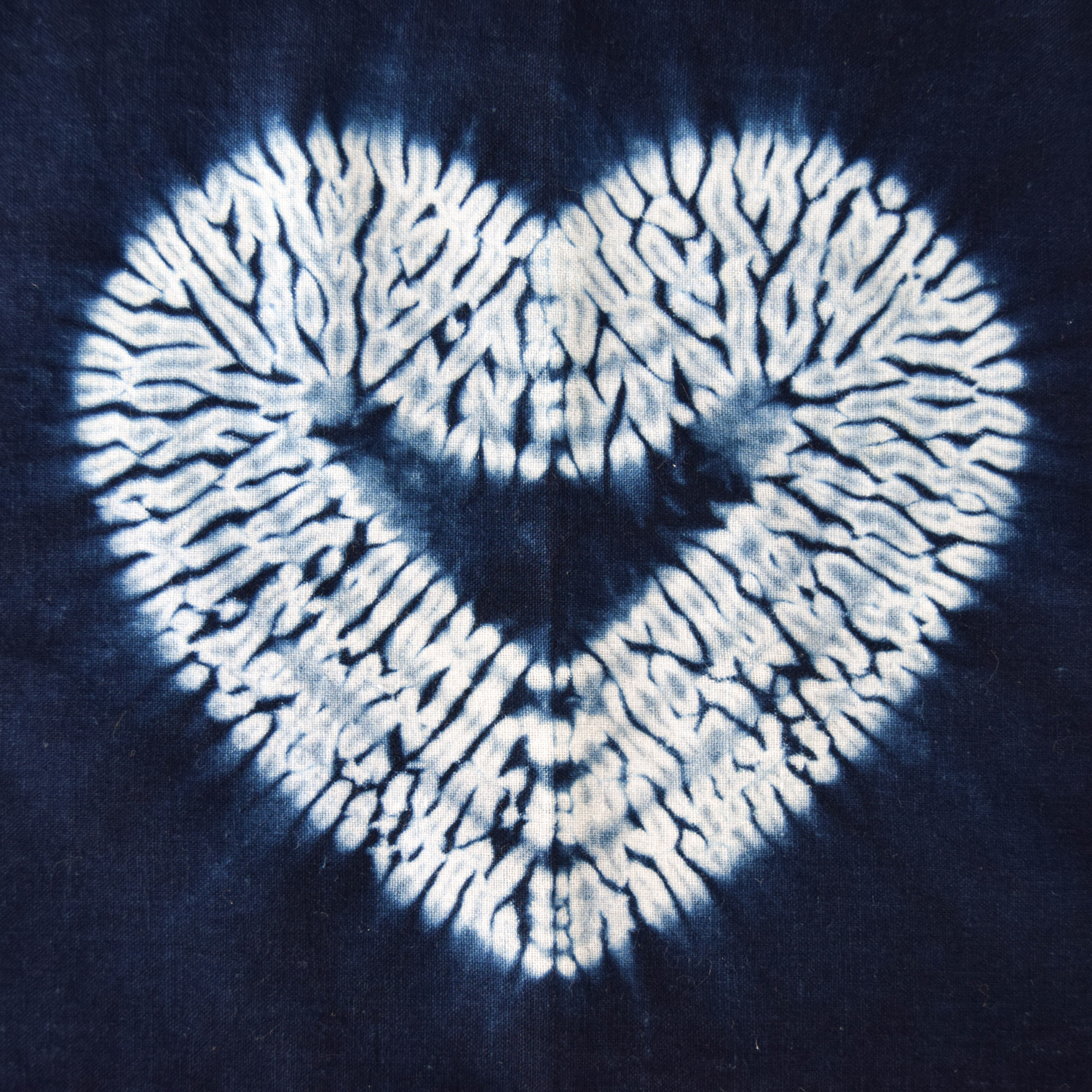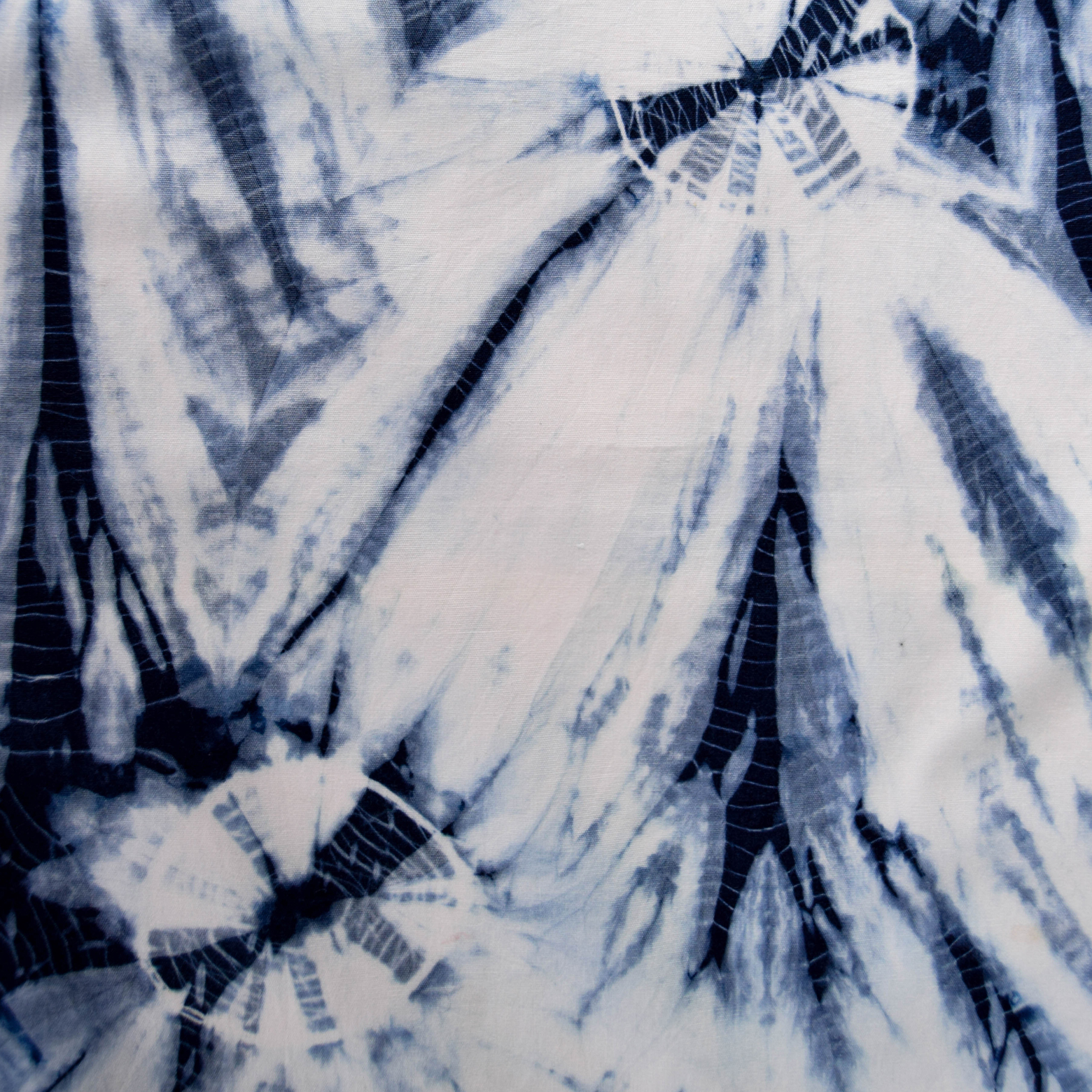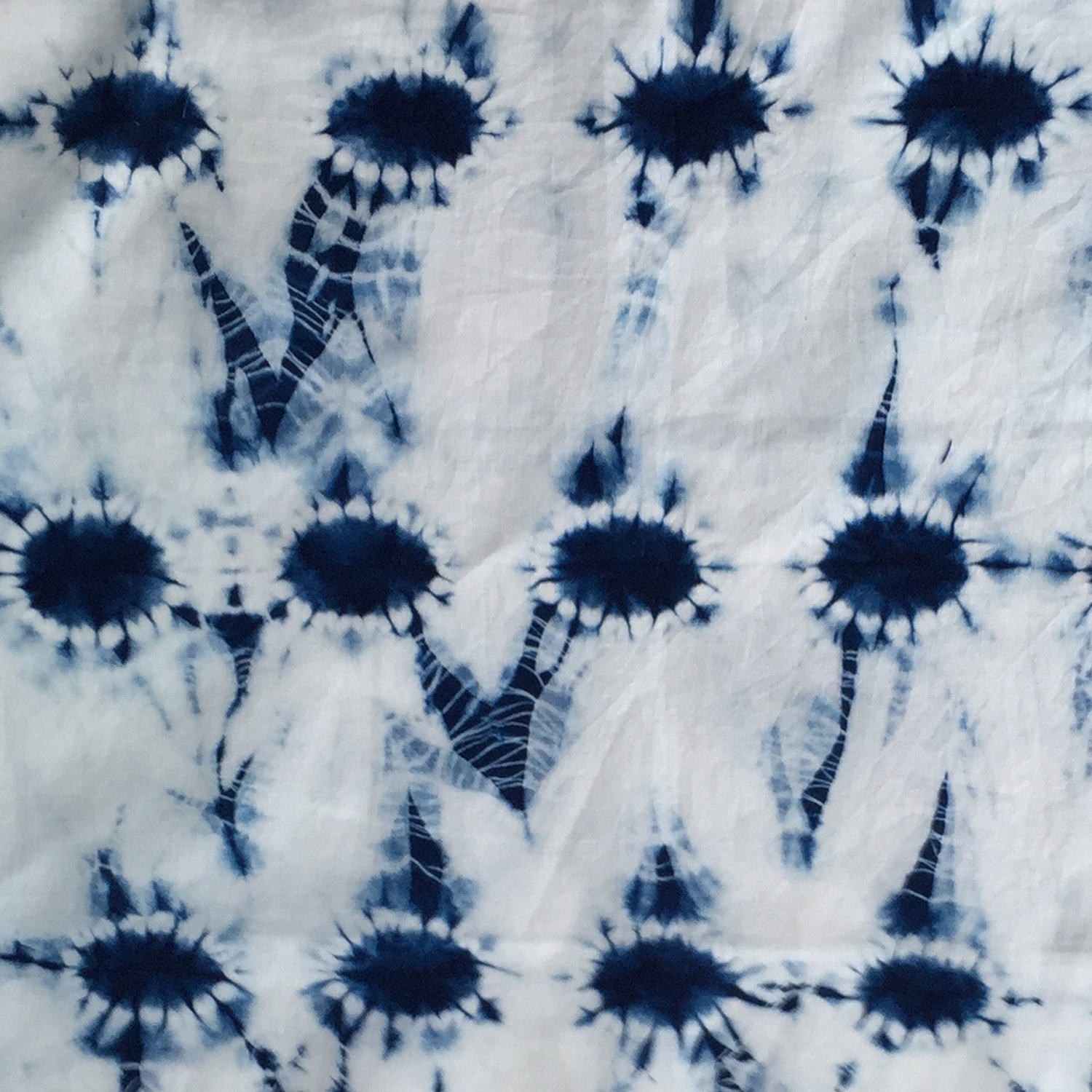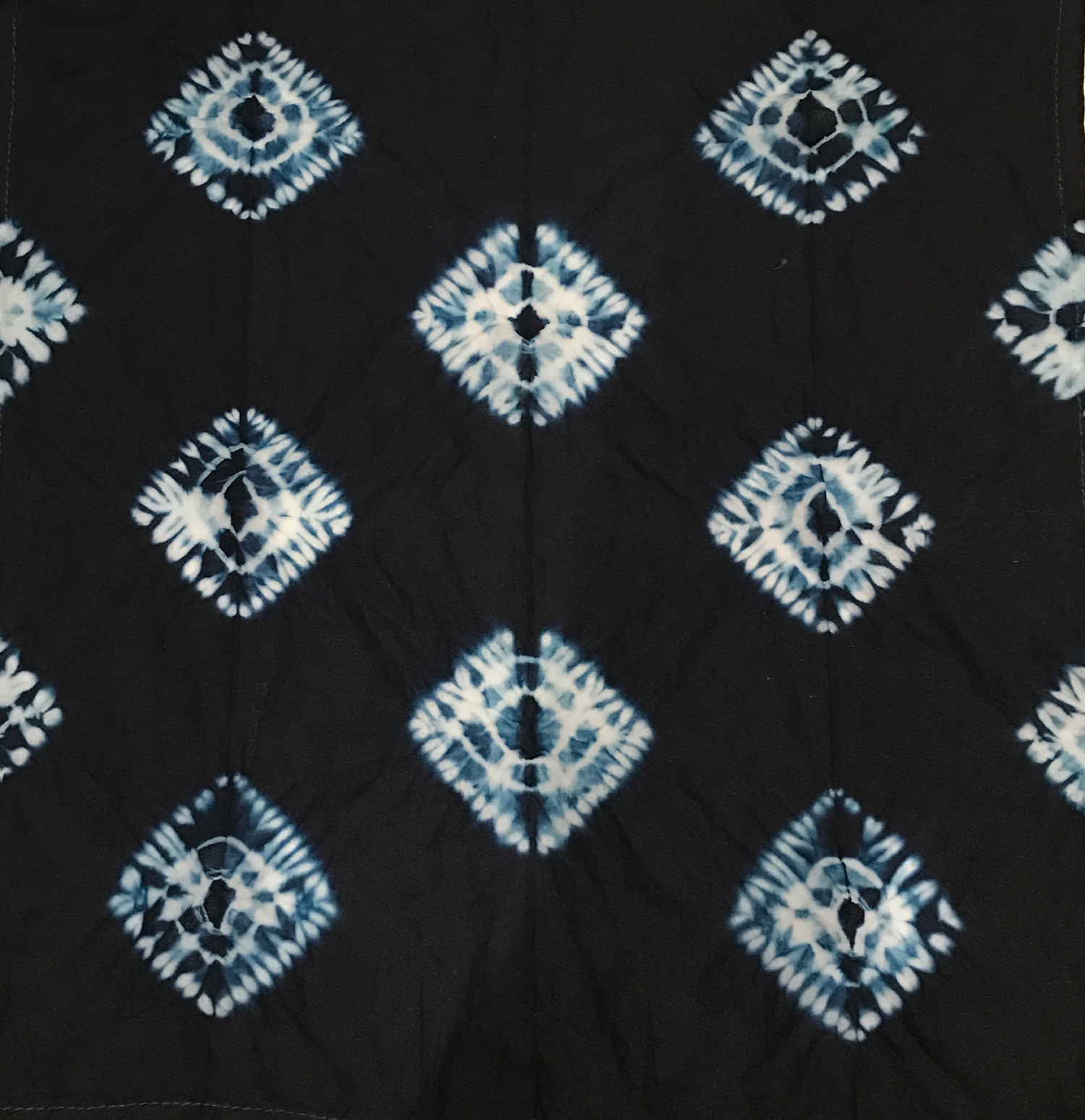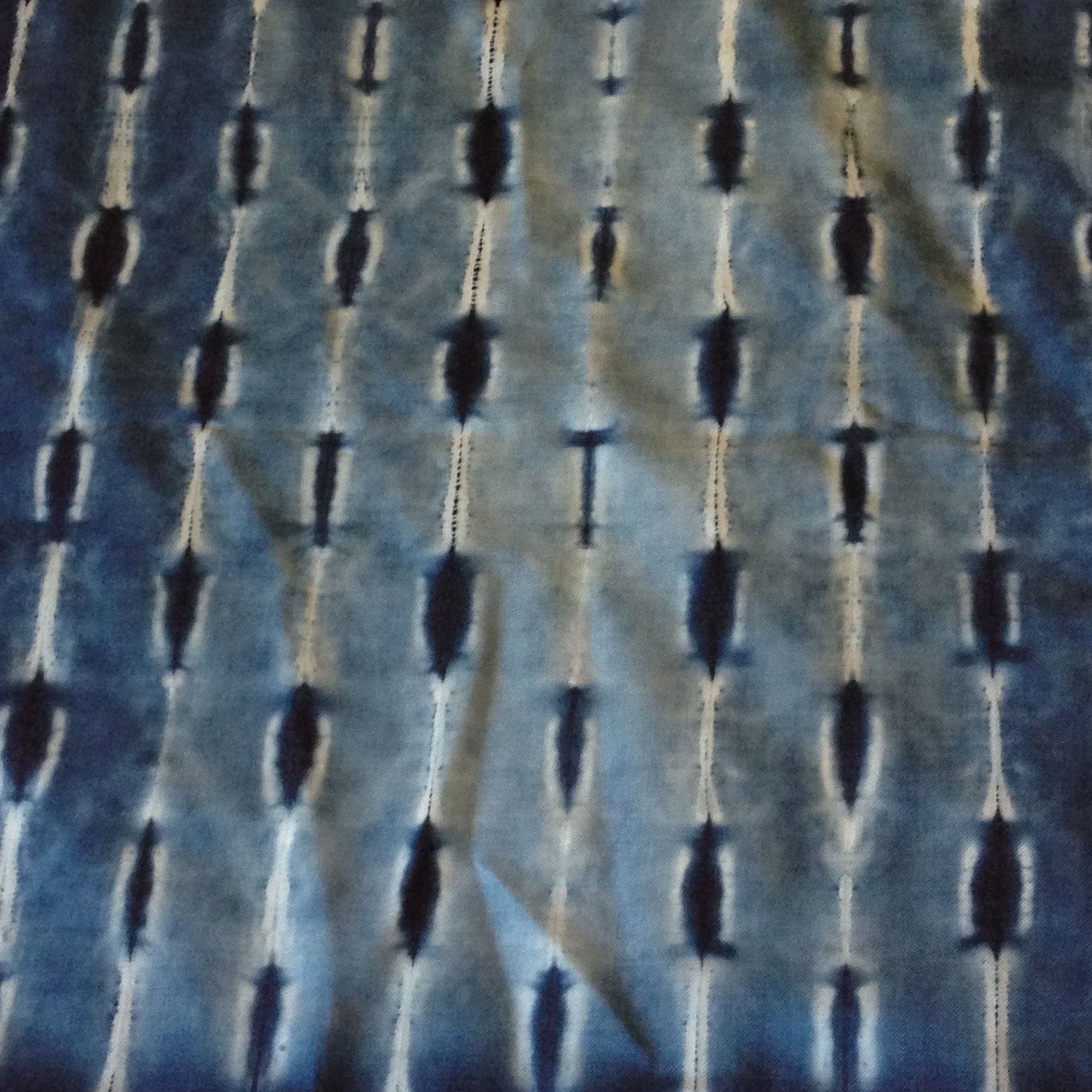What is shibori?
“Well, its not tie dye although that’s what most people assume when they see it!
It’s probably because tie dye is familiar and brings back happy memories of childhood.”
Shibori is the Japanese art of shaped resist dyeing textiles. Its derived from the Japanese verb "shiboru", meaning to wring or to squeeze; something a confirmed indigo dyer is all too familiar with.
Shibori is comprised of hundreds of techniques and has a rich history spanning centuries. The main classifications are stitching, binding, clamping and pole dyeing; each branch containing endless processes within it. It’s a complex subject requiring years of study and practice.
Many of the techniques require hours of patient stitching and pulling up of threads, each of which has to be tied off tightly using specific knots to ensure a good result. Further hours of dyeing, rinsing and bashing (to remove loose dye) follow before the fabric is ready to be unpicked and its pattern revealed.
It is a slow craft that richly rewards those that follow it with beautiful, complex patterns and stunning fabrics from which other objects can be made.
Types of Shibori
The building blocks of shibori are a series of knots which, when mastered, allow the artist to achieve the best compression of the fabric and the cleanest and crispest marks and patterns (although indigo also has a will of its own so unexpectedly beautiful marks can be achieved as well).
The simplest patterns can be made using simple binding and knots. These include “Ne Maki” (wrapped beads), Bai (seashell) and Kubo (spiderweb).
There are also three main types of stitch - “nui” (simple running stitch, but the most flexible in terms of pattern extension), “ori nui” (fold stitch) and “maki nui” (wrapped stitch), which can also be combined to create more complicated patterns.
Other techniques include:
Makiage and Guntai shibori - both of these use stitching and binding in combination to create crisp, bounded patterns and are often used in repeat to create rich and heavily patterned textiles
Hishaki-nui and Miru shibori - patterns are created by stitching through the fold, often using multiple layers of adjacent stitching
Itajime shibori - fabric is pleated into specific shapes and boards matched on both sides and held tightly together with clamps to create repeating kaleidoscopic patterns
Boshi (capping) shibori - Boshi means “cap” in Japanese and these patterns keep sections of the fabric completely free of dye by stitching around the motif, pulling up the threads and then covering part in plastic and binding tightly to keep the dye out.
Yanagi (willow) and Hinode (Sunrise) shibori - these patterns are part of a class of shibori known as “Shin Ire” or rope core work. Yanagi patterns using offset kumo bindings and Hinode patterns are aligned circular patterns stitched through the fold. In both techniques, the prepared fabric is pleated and then tightly bound onto a flexible core
The subject area is vast and the patterns possibilities pretty much endless, which is one of the reason I love doing it so much!




